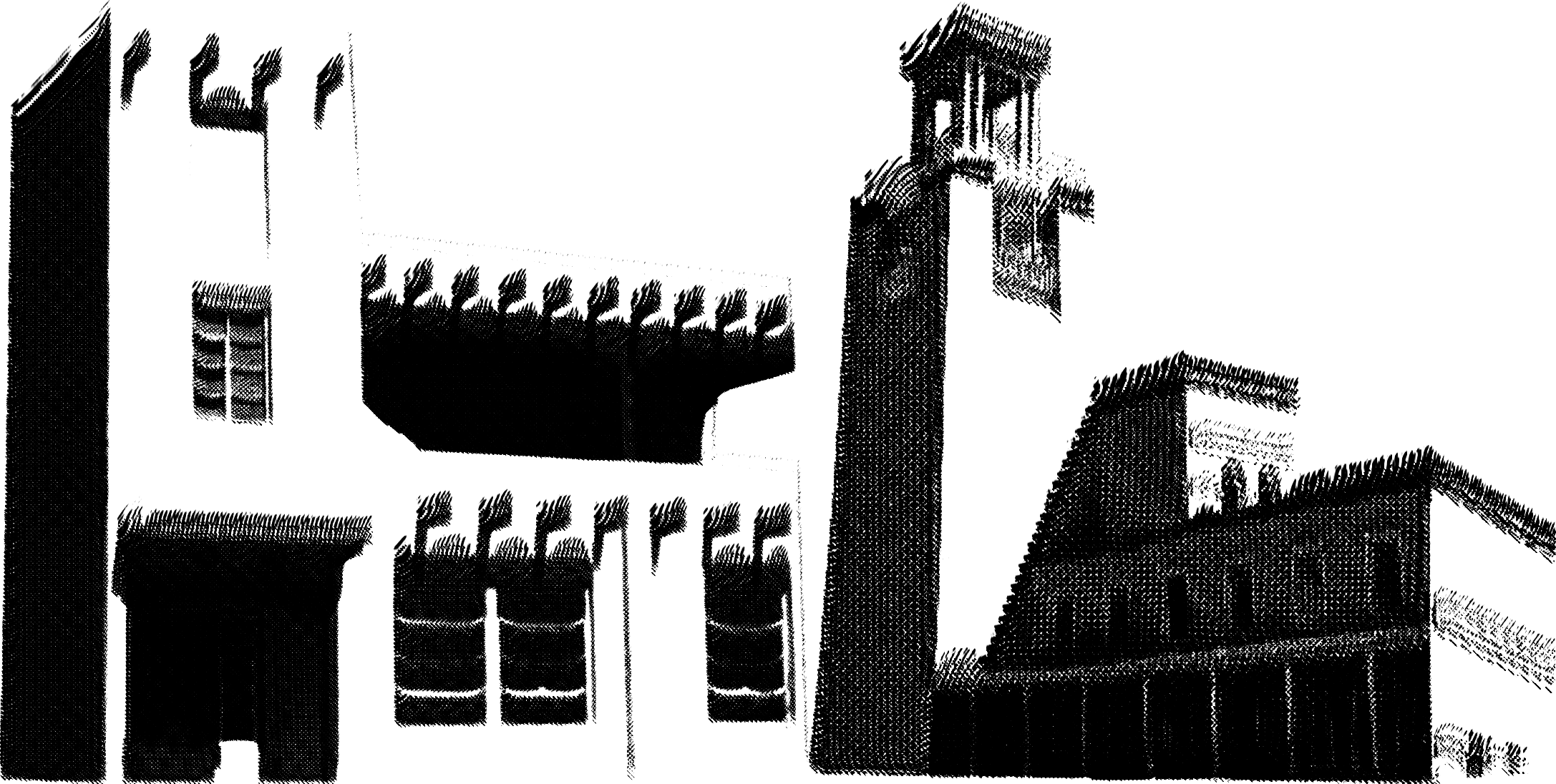Architecture
New Mexican architecture is traditionally typified by adobe structures, often featuring protruding wooden beams called vigas, usually with a flat roof with parapets. Plazas and placitas, which translates to “little plazas”, are common features on city centers and as smaller courtyards. Kivas, round kiva-styled main rooms, or kiva-esque features are found throughout interiors, such as recessed niches, internal vigas in the ceiling accompanied by decorated corbels, and raised seating vaults as well as vault-like half walls. Various trimmings, both on the interior and exterior, like pediments with small decorative iconographic imagery, and exterior sash windows are sometimes featured. People usually sat on raised seating vaults, rugs, cushions, or simply on the floor, traditionally; furniture, chairs, and high tables have also been widely used after the 17th century, along with pitched wooden, shingled, or metal roofs. Since the 18th century New Mexico has incorporated Greek and Roman trim, art-deco, Mexican and American architectural trends, California-like ceramic shingles, Route 66 styled neon, Chinese gazebos, and Japanese dry-gardens or xeriscaping , and other architectures have been incorporated into New Mexican construction and design. Today, New Mexico remains at the forefront of cutting edge design and architecture, with such designs as the sustainable Earthship houses and unique art-project installations.
Architectural Points of Interest
The most popular architectural styles in New Mexico are known as the Pueblo Revival architecture and the Territorial Revival architecture. They are heavily based on the ancient architecture of the Pueblos and the multi-generational architectures created during the Spanish, Mexican, and American Territorial phases. These two styles have been interpreted by multiple architects, and have been incorporated into a variety of architectural situations, and blended with external influences to varying degrees. In downtown Albuquerque, Pueblo Deco architecture is prominently featured, a fusion of Art Deco and Pueblo Revival architectures. Bright and colorful American neon kitsch was popularized during the arrival of Route 66.
International influences can be found, such as gazebos, which finds their origins in ancient China, are found at the heart of the old Spanish plazas of Santa Fe Plaza and Old Town Albuquerque. Another example of the Revival architectural styles blending with various settings is at the Sasebo Japanese Garden at the Albuquerque Rio Grande Botanic Garden and the Ten Thousand Waves spa and bathhouse in Santa Fe, these two locations feature Japanese architecture incorporated into New Mexican architectural styles.
These two older building styles were the main inspiration of the modern Pueblo Revival architecture, which was used prominently throughout the University of New Mexico’s main campus in Albuquerque. The territorial styles of the New Mexico Territory within Mexico and the United States were the heavy inspiration for the modern Territorial Revival architecture, which mixes the Pueblo architecture style with the Mexican and American territorial phase and the Spanish Folk Territorial Style architecture of Northern New Mexico. this building style has been used on buildings like the Bataan Memorial Building in Santa Fe. Isaac Rapp is a name often associated with the Territorial Revival architecture while John Gaw Meem and Mary Colter are often associated with the Pueblo Revival architecture.
Since these two Revival architectural styles are popular throughout the state, they have been blended into a variety of settings. Though most of the architecture in New Mexico borrows from Pueblo Deco, Pueblo Revival, Territorial Revival architectural styles, there have been buildings drawing inspiration for other styles, including; Colonial Revival, Georgian Revival, Gothic Revival, Mission Revival, Modernist, Moorish Revival, Neoclassical, Queen Anne, Renaissance Revival, Spanish Colonial, Spanish Revival, Streamline Moderne, Victorian, and various projects by the Works Progress Administration.
New Mexico is also home to two newer architectural techniques, the first being Earthships by Michael Reynolds and the other being Ra Paulette’s cave sculptures which were featured in the documentary Cavedigger. An Earthship is an “off-the-grid ready” home, with minimal impact on the environment due to built-in gardens and less reliance on public utilities and fossil fuels. While Ra Paulette’s cave sculptures are ornate pseudo-buildings, hand-carved into decorated sandstone caves. Both the Earthships and Ra Paulette’s cave sculptures are inspired by New Mexico culture, in that they try to celebrate nature while they also pay tribute to the adobe and sandstone of New Mexico’s heritage Pueblo Revival architecture and the Territorial Revival architecture.
Specific architectural points of interest are the Sandia Peak Tramway, Ghost Ranch, the buildings around Old Town Albuquerque and Santa Fe Plaza, and various buildings along Route 66.

